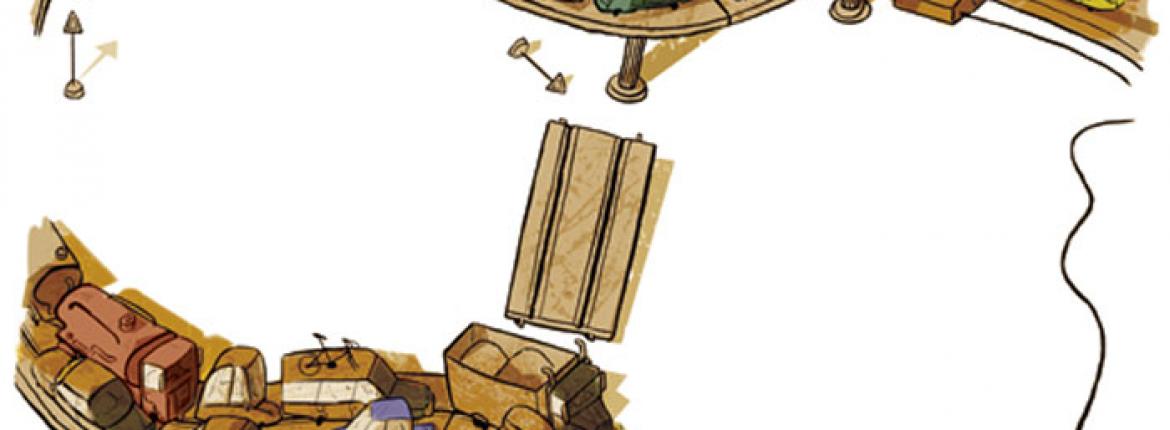To help find answers, the International Transport Forum invites transport officials to the German city of Leipzig every year to talk mobility. Topics range from Somali piracy to air transport security standards, but the topic everyone keeps coming back to is congestion.
For huge cities like London, Beijing and Mumbai, public transport is a given. With their massive populations, public transport can, obviously, solve transport problems more efficiently than individuals on their own can. In New Zealand, this is not so clear-cut.
Even Auckland doesn’t rate in the top 200 largest cities in the world. And our cities are turning inside out, with employment growth on the outskirts and people moving to live in the entertainment-rich centres. Wellington, with its central government employer, is the only Kiwi city with public transport use comparable to a European city’s.
Other factors peculiar to New Zealand complicate the congestion challenge. Our cities lack fixed, very high-throughput star or circle networks between employment and housing, which public transport needs to flourish. Existing arterial roads weren’t designed for growth and public transport needs space. In cities like Leipzig, with strong public transport, arterial road corridors are wide. (These leave room for trams, buses and cycleways, but are designed to not hinder cars. People like public transport but, even in Leipzig, the car dominates.)
In Europe, wider arterial roads are offset by slow neighbourhood roads and shopping avenues. This encourages transport onto arterial roads and reduces the risk for other users – pedestrians, cyclists – on neighbourhood roads. In New Zealand, the problem is that people living on arterial roads want them to be treated as slow avenues, so arterials get encroached upon and strangled. Creating one-way systems and removing on-street parking are the quickest ways to turn congested arterials into free-flowing routes and to provide room for public transport and cycle lanes but, until they experience the benefits, people are loathe to give up two-way roads and convenient parking.
A more popular solution for New Zealand’s congestion problems is underground rail. This is silly-money expensive. The Auckland underground rail link was estimated to cost $650,000 for each metre of the 3.5km planned. For it to be a true transport system, it would have to be bigger and cost much more.
Delegates at the conference shared various creative solutions. Enrique Penalosa, the former mayor of Bogota, Columbia, recognised his city simply couldn’t afford expensive trams. He implemented widespread bendy-bus routes. The extra long buses operate like trams, but are a fraction of the cost to run, can go everywhere, and provide a better service.
Another solution with potential is cycling – a mode of transport that is hugely popular in the flat cities of Europe. Cycle networks can be a useful fine-weather alternative in congested cities. In Germany, cycle lanes are outlined on wide sidewalks separating vulnerable road users from motorised traffic.
While we can learn a lot from other countries, it must be acknowledged that foreign political structures create more scope for investment than ours. In many European and Scandinavian countries, local government takes a slice of GST, income and capital gains taxes. Investing in transport generates a clear return for the city. In New Zealand, transport investment depends on rates, with petrol taxes and road user charges topping up. Most is spent on maintenance.
We treat transport as a cost, not an opportunity.
International experience shows that successful transport development involves transport system planners becoming the principal property developers, rather than waiting for private sector developers to create problems for them to fix. In Germany, train stations have more shopping available than Westfield malls in this country do. This is something New Zealand is way behind on. We don’t treat transport construction as property development – we treat it as a catch-up service for private property developers.
The problem of congestion can be managed, but we have to be realistic and recognise that someone will have to give something up. While some may think people will give up their cars, that is not bankable politics. This fact was obvious even at the Leipzig conference.
Despite an exhortation by delegates for enhanced public transport and the city of Liepzig providing free tram and bus tickets, most of the 800 delegates opted to use a fleet of minibuses and limousines provided by organisers. The free rental cycles remained outside the exhibition ground, largely untouched. The car may be the source of many problems but, given a choice, it seems we prefer it.
Reported by Peter King for our AA Directions Summer 2011 issue




